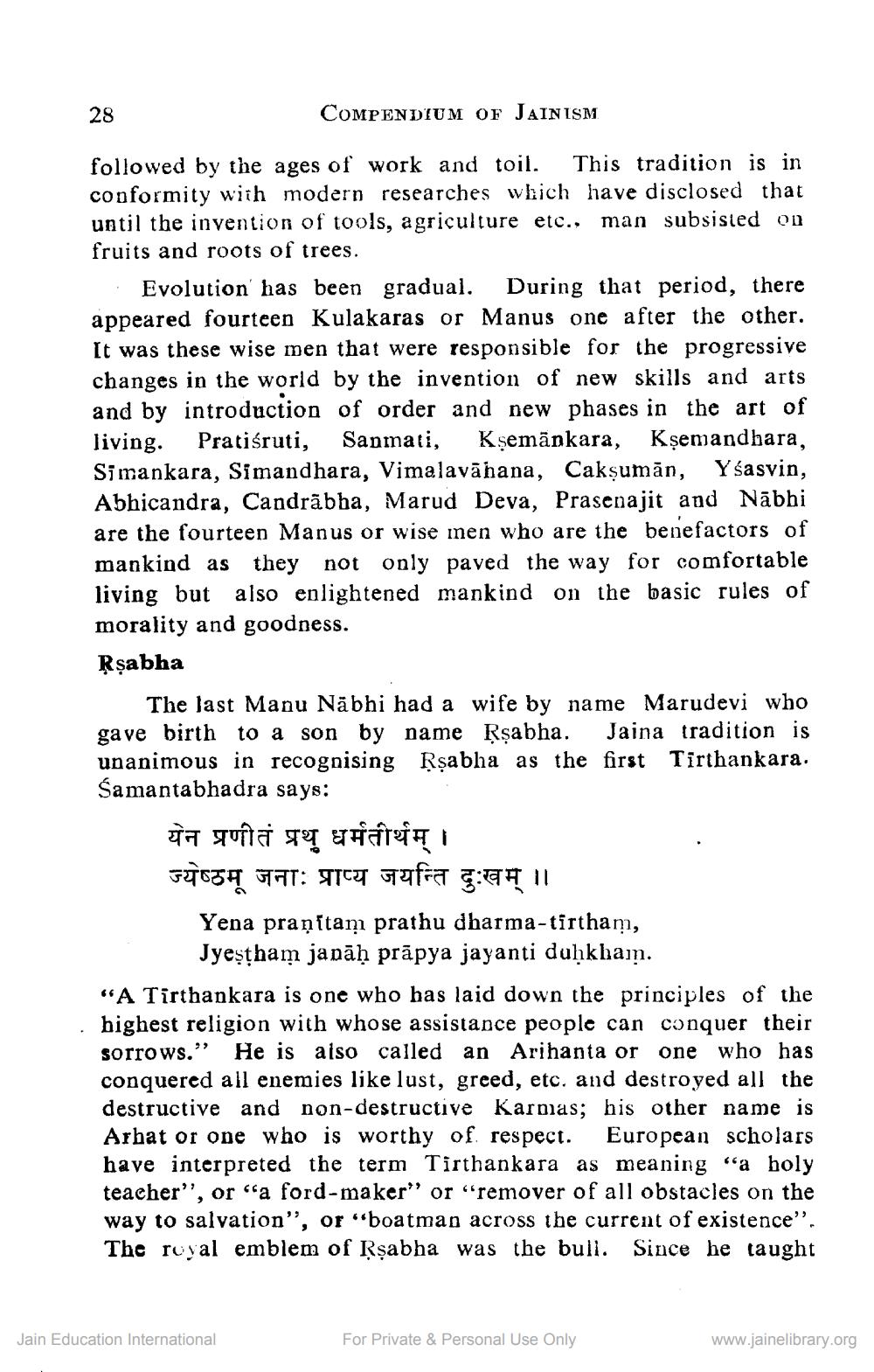________________
28
COMPENDIUM OF JAINISM
followed by the ages of work and toil. This tradition is in conformity with modern researches which have disclosed that until the invention of tools, agriculture etc., man subsisted on fruits and roots of trees.
Evolution has been gradual. During that period, there appeared fourteen Kulakaras or Manus one after the other. It was these wise men that were responsible for the progressive changes in the world by the invention of new skills and arts and by introduction of order and new phases in the art of living. Pratisruti, Sanmati, Ksemänkara, Ksemandhara. Simankara, Simandhara, Vimalavānana, Cakşumān, Yśasvin, Abhicandra, Candrābba, Marud Deva, Prasenajit and Nābhi are the fourteen Manus or wise men who are the benefactors of mankind as they not only paved the way for comfortable living but also enlightened mankind on the basic rules of morality and goodness. Rşabha
The last Manu Nābhi had a wife by name Marudevi who gave birth to a son by name Rşabha. Jaina tradition is unanimous in recognising Rşabha as the first Tirthankara. Śamantabhadra says:
येन प्रणीतं प्रथु धर्मतीर्थम् । ज्येष्ठम् जनाः प्राप्य जयन्ति दुःखम् ॥
Yena pranitam prathu dharma-tirtham,
Jyestham japāņ prāpya jayanti duhkham. “A Tirthankara is one who has laid down the principles of the highest religion with whose assistance people can conquer their sorrows." He is also called an Arihanta or one who has conquered all enemies like lust, greed, etc. and destroyed all the destructive and non-destructive Karpas; his other name is Arhat or one who is worthy of respect. European scholars have interpreted the term Tirthankara as meaning "a boly teacher", or "a ford-maker" or "remover of all obstacles on the way to salvation", or "boatman across the current of existence''. The royal emblem of Rsabha was the bull. Since he taught
Jain Education International
For Private & Personal Use Only
www.jainelibrary.org




